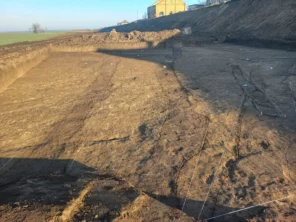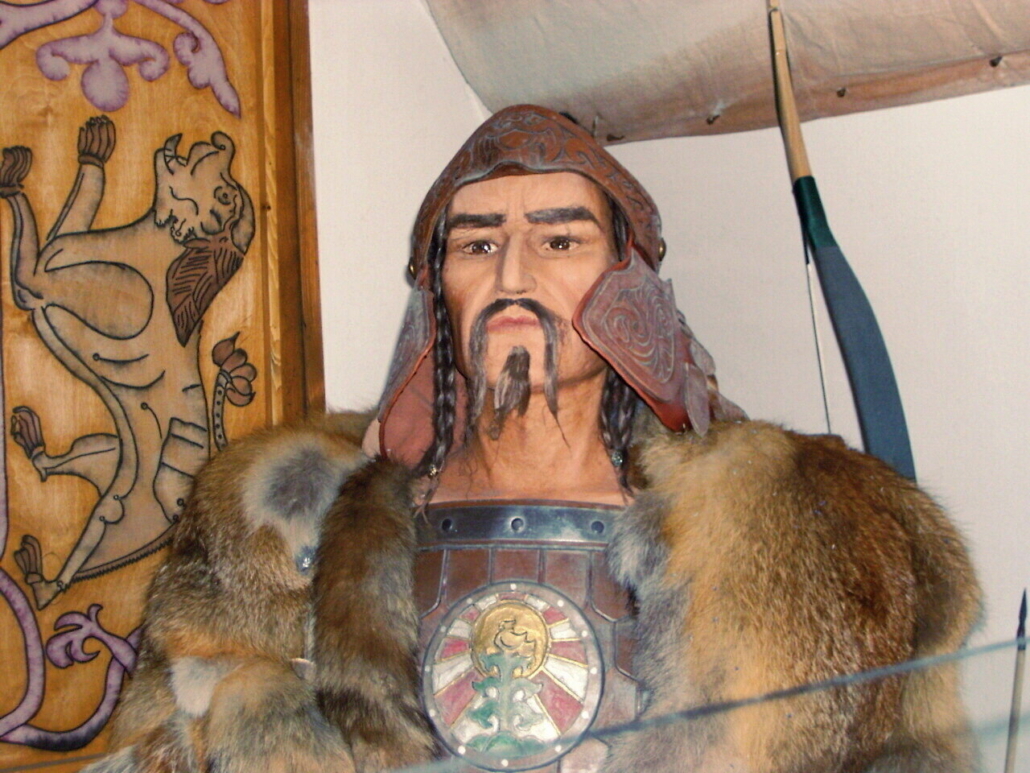Tomb of Hungarian ancestor Hun king found in Romania?
The remains of the tomb of a probable Hun warrior have been found. The tomb was unearthed during the construction of a motorway in south-east Romania. The shrine is quite rich: it includes a gold-plated sword with precious stones. Could it be the tomb of Attila, the king of the Huns, Hungarians’ glorious ancestors?
Short history
Who were the Huns and how are they, if at all, related to today’s Hungarians? Over the centuries, a legend developed in Hungary based on medieval chronicles. Legend has it that Hungarians (and the Szekler/Székely ethnic group especially) are the descendents of the Huns. According to the legend of the Hungarian conquest of the Carpathian Basin (Honfoglalás, around 895), under the leadership of Prince Árpád, the Hungarian tribes gradually conquered and settled in the Carpathian Basin.
However, there are some theories about a “double conquest”. According to the theory of double conquest, the ancestors of the Hungarians conquered the Carpathian Basin in two stages. The first phase was around 670, while the second phase is the well-known late 9th century entry. Before even the first phase took place, around 375, a people called Huns were living in the Carpathian Basin.
The discovery
Three construction workers were digging in a snow-covered field near the town of Mizil in south-eastern Romania, some 220 kilometres from the Black Sea, when they came across something unexpected, Live Science reports. Initially, they were not surprised, as this was the fourth archaeological site to be excavated since construction began.
Extraordinary discovery in Romania, perhaps found the tomb of Attila “the scourge of God” https://t.co/TFzW8rskCo
— Heal the Planet ✌✌🎸🎸 (@fwtoney) January 25, 2023
“The tomb is filled with more than 100 artifacts, including weapons, gold-covered objects and pieces of gold jewelry inlaid with gemstones,” Silviu Ene(opens in new tab) of the Vasile Pârvan Institute of Archeology in Bucharest, Romania, told Live Science. He is the lead archaeologist investigating the tomb.
The tomb dates back to the 5th century AD. At the time, the region was occupied by the Huns. Some speculate whether it is possible that Attila’s tomb was found. TheNews even made a video of the extraordinary discovery. You can see some of the finds in the video below:
- Read also: Lost emperor discovered in Transylvania!
According to Silviu Ene, the ethnicity of the warrior is not yet known. However, the rich tomb remains suggest that he belonged to the Hun ruling class. They controlled much of the territory west of the Black Sea at the time, including the region that is now part of Romania, he said.
The archaeologist also revealed that the tomb preserved the full skeleton of the warrior. His face was covered by a golden mask, the remains of which were also found. But so far only one leg and the head of his horse have been recovered, travelo.hu reports.
In the coming months, the bones and artefacts will be cleaned and examined, and will be put on public display.

Read alsoSensational discovery, PHOTOS: antique village remnants found under the Belgrade-Budapest railway
Source: livescience.com, travelo.hu
please make a donation here
Hot news
What happened today in Hungary – 26 July, 2024
Drama: number of births in a 20-year low in Hungary
Yay or nay? – 6 odd Hungarian delicacies that make our skin crawl
Budapest tourism “exploded” this past weekend
Container transport in Budapest may stop: How will this affect Hungarian economy?
Minister: Hungary will protect its territory by every means possible





2 Comments
Be careful. Make sure that the Romanians will not figure it out that it was a Dacian.
All the so-called “Romanian” treasures or hoards were and still are stolen from “CORONA” (Kronstadt”) or BRASOV city ! This was the great capital of Attila, of Sigismund of Luxembourg and …and…of “DRACULA”. The city mountain is named “Tempa” (from “Templum”) because of the Roman top-chapel which existed until 1600. The Protestants and their Greek-Bulgarian and Turkish allies occupied the city and fired churches, chapels and massacred all the Catholics . BUT: there still exist the city monument the “Cathedral of Sanctissima Maria” (“Black Church”) concluded by king Matthias Corvin and his queen Beatrice of Aragon, which is the largest Medieval basilica between Vienna and Istanbul. King Sigismund discovered about 1400 here in BRASOV “Attila’s tomb” with fabulous gold treasure of Gothic and Hunnic manufacture (i.e. The “Pietroasa treasure” stolen by Russian troops about 1825 from “Steingasse” chapel – strada Pietroasa, after 1950 “Spatar Luca Arbore”). The history of this strategic city from the Carpathian Arch , which was also the head quarters of the famous “DRACULA” and his Szekler army, is huge and cannot be perceived by the “Pravoslavnik Romanian” dilettantes who still dominate this important region thanks to the Soviet occupation and the crypto-Communist extension… and !…